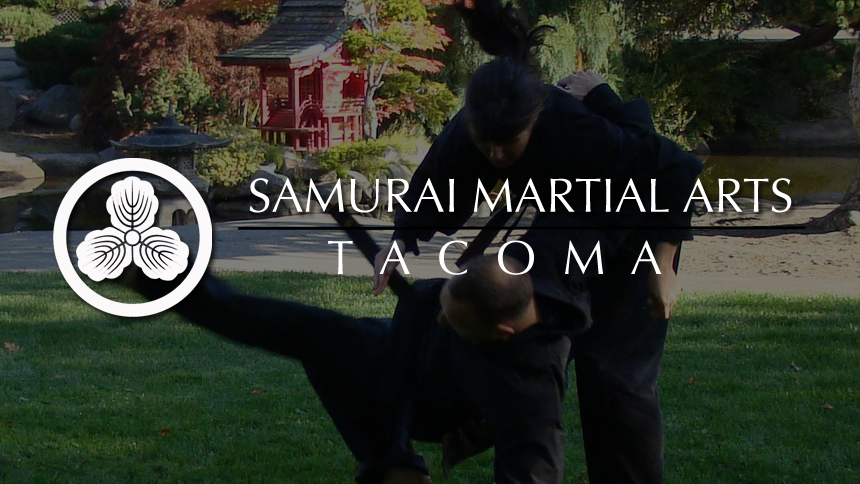Combat is two or more personalities trying to impose their desire on one another, and does not end until one side loses their will to resist. This can be anything from a verbal argument to nations at war. What is important to recognize is that even if you damage your adversary it does not mean they will quit, or not try to harm you as you withdraw. Because the real fight is between wills there are a few factors you need to consider before the fight. These is the foundation of cerebral factors of self defense.
Personal Motivation to Prevail in Cerebral Factors of Self Defense
First, what thing in your life is worth fighting for? This is an often-overlooked aspect of self-defense. Most people are willing to fight for a loved one, or a prized possession more then they would fight to defend just themselves. Know ahead of time what that reason is that will motivate you to prevail. Consider the long-term traumatic effects of failure. If you are raped or assaulted and unable to resist or aid loved-ones how will that impact your self-confidence, your ability to effectively communicate with loved ones, your intimacy with loved ones, or your independence. Do not become one of the many who surrender because “I just want this to be over!” Unfortunately the vast majority of victims comply with an attacker just because they want to get the experience over with as quickly as possible. So they follow the attacker’s commands hoping the situation will not become worse. However, in that mental state they are “threatened” and are considering only the acute traumatic effects. Had they thought through the situation in advance they would be better able to adopt a mental state of being “challenged” in which they are looking for opportunities to escape or subdue the attacker.
Police estimated that Albert DeSalvo raped more then 300 women. He was a big man who had been a boxer in the Army. Prior to his execution for murder he was interviewed about the assaults. When asked if he was successful in every attempt he said he was not, and that the only people he attacked were the ones that did NOT resist.
At the 2005 Combatives Camp, Tony Blauer recounted a story of a woman who was attacked while walking through a park. She had saved money for a long time in order to buy the jacket she was wearing. She quickly reached the “how dare you” level of indignation necessary to fend off the attacker simply because he might have damaged a new leather coat she had worked so hard to attain. She said she fought back immediately because she thought about branches on the ground puncturing her new jacket.[ii]
A woman in British Columbia came home and startled a burglar. The burglar picked up an iron poker from the fireplace and hit the woman repeatedly. She suffered a gash to the head, a broken arm, and a broken wrist. The woman’s 12-year-old daughter jumped on the assailant who rammed her face into the wall. The mother was on the floor when she saw this and it made her jump up and fiercely attack the burglar who then panicked and ran away.[iii] The mother was willing to fight harder for her daughter then she was for herself.
These are three examples of how fighting back improves your odds for surviving a dangerous attack. Research supports this statistically as well, improving your odds of escape to approximately 70% even if you have no martial skills.[iv]
Fear Management
Fear is an emotional response characterized by panic and anxiety. Fear takes over in the absence of rational thinking. The best way to not succumb to fear is preparation beforehand. This includes determining your personal motivation to prevail, and applying the logical sequence of steps that follow. This will keep your mind occupied and oriented toward a final goal of survival, instead of getting overwhelmed during the assault.
When I went to the basic airborne course I expected the first parachute jump to be exhilarating and my main concern was that I didn’t give in to fear and freeze in the door. There was a lot more to jumping out of an airplane then I had known about before hand. For two weeks prior to your first jump you are practicing every aspect of the jumps through various simulations. By the time I made my first jump I had a plan that was reinforced by a series of checklists. In fact, my mind was so occupied throughout that I never had time to panic or succumb to fear.
Deterrence and Continuum of Force
Be aware of the legal ramifications of your actions, and try to detect and avoid dangerous situations. If unavoidable try to defuse the situation verbally. Then defend yourself by applying action consistent with the threat level. You may have to get nasty until you can escape or the adversary is restrained or unconscious, but you should not continue to punish them beyond that point.
The first step to winning a fight is to avoid it all together. And avoiding it begins with an awareness of your personal risk. Consider where you live, work, and travel and the threats most often associated with those areas. Does your lifestyle such as the people you spend time with, the way you dress, the car you drive, your manner of speech, temperament, posture, stride, and eye contact increase or lower your chance of being a target?
In a series of interviews with convicted felons, the inmates discussed how they selected victims and what would make them change their minds. They all looked for someone who they considered would crumble under pressure and not offer resistance, people who were less aware of their surroundings, had hearing or vision impairments due to headphones, hair in eyes, etc…and exhibited poor posture. One of the key deterrents was if someone stood up straight and looked them in the eye. They all had the feeling that such a person was more likely to resist and had a greater chance of identifying them if they were caught.
One inmate who had assault and manslaughter convictions told a story of traveling by train to another side of town with his girlfriend. As they got off the train there were several men waiting to rob the passengers. He recognized them as predators and simply stated “I know what you do, but your not doing it this time.” They then began to rob the other passengers and left the felon and his girlfriend alone.[v] It is important to realize that most criminals are mid-level predators, meaning that they are aware that to the right person they may easily become the prey, and this is a major consideration in victim selection. For them the risk of injury will also make them a more desirable victim to other predators.[vi] By carrying yourself as the superior predator you lower your chances of being targeted.
The first stage in criminal activity is intent. Once they decide they are going to commit a crime there will be subtle changes in their mannerisms that often register to victims in the form of intuition.[vii] However, our society has conditioned us to ignore these feelings at the risk of being considered rude, or looking foolish because we over reacted, or being labeled racist or a bigot because someone might say we are stereotyping. Your safety is more important then someone’s opinion, which will be forgotten in a few minutes anyway. Stereotypes exist because they were accurate many times before.
Some predator tactics you should be aware of are persons walking in the same direction as you with an accelerated pace that allow the predator to naturally close the distance between you. Cornering you by standing or walking between you and an avenue of escape effectively trapping you with cars, walls, fences, etc… Surrounding is used with multiple predators; frequently one will speak to hold your attention as the others move to surround you. If a group of young males are hanging out in a pack, being an easy target may invite predator behavior even if that was not their intent beforehand. In other instances, they may deliberately be baiting the unaware, such as spacing themselves along a wall trying not to look like they are together. Once you pass the first member it is easy for them to surround you. Another surrounding tactic is when you see two predators walking together suddenly split apart giving them the opportunity to approach a victim from two sides. After splitting they may attempt to “ignore” one another, or one may conveniently post themselves near a door or entryway.[viii]
The second step in criminal intent is to interview the potential victim to determine if you recognize what he is up to, and if you are safe to attack. This may take place in one of two ways. First, they may conduct a silent interview based on your attitude, posture, stride, and awareness. The second is by making conversation, bullying, or asking a question as a means to close the distance with you.[ix]
Strategies that assailants use when “interviewing” their victims include the following:
• One tactic a predator may use is to choose language that groups you and the predator into a group against some third party or circumstance, “we’re gonna be late”, “what should we do about…”, “that [whatever] is a trouble for us all.”
• Being charming is a skill not a trait and is a directed instrument that has a motive. Not all charming people are predators, but if a stranger is charming ask yourself what is it that he wants?
• Too many details may be present when the person knows they are lying and needs to make the story seem more believable to them.
• Labeling a person is done to make the person act in a way that proves the label wrong, such as “your too good to talk to someone like me”, or hinting a person is racist, or discriminatory in some other manner.
• Reciprocation is when a person does something to assist you in order to make you feel obligated to that person, such as carrying an item, or opening gates and doors.
• Predators may make a promise to do something, even though you did not ask. For example, “I’ll just make this call and I’ll be out of your way. I promise.”
• A predator may push the interview by ignoring no or no signals by doing something just a little less then what you stopped them from doing, and then pushing a little farther.[x]
Up until this point your best defense is avoidance, awareness, and boundary setting while projecting the confidence and attitude of the superior predator, or at least an unwilling prey. In the criminal world a predator will not invade another predator’s territory unless they intend on attacking because they recognize the danger the opposing predator brings. Generally, in a street situation this boundary is about five feet. If they violate the five feet rule you should be fully focused on them, make eye contact, and maybe ask them directly what are they doing. In situations where a normal pedestrian has no reason to get within five feet, challenge them at 20 feet.
Setting boundaries with people you know in a work or intimate situation is a little different. In these cases you need to be aware of what sliding boundaries are and make sure not to use them. A sliding boundary is when you tell a person “no” or physically indicate what their boundaries are, such as removing their arm if placed on your shoulder, but then allow them to get a little further when they persist. Instead of “no” meaning “no”, you have communicated that “no” means you have to try harder. In an intimate situation a man may interpret this as a woman not wanting to seem “easy” and wants him to be more forceful or aggressive. In this case the woman needs to decide how far she wants this date to go and only use “no” when he hits that boundary and then stick to that boundary for the rest of the date. The first time he tries to push beyond the established boundary she needs to call attention to it and not let him progress. She may choose to do this by saying something like, “I don’t know you that well yet” or “not tonight” or whatever she is comfortable with as long as she verbally states those are her boundaries for this date. If this seems uncomfortable or rude to you, you should rehearse it before hand.
Once a predator encounter is inevitable you should immediately assume a nonaggressive posture that will bring your hands into the fight and offer you the opportunity to move offensively or defensively as the situation requires.
[i] Blauer, Tony. (1988). Cerebral Self-Defense: The Mental Edge. Blauer Tactical Systems CD. [ii] Blauer, Tony. (2005). Public Speech on Self Defense at Combatives Camp. Burlington, Vermont. [iii] Dimitri, Richard. (2004). Get R.E.A.L. Seminar Series. Senshido. DVD. [iv] Ullman, S., & Knight, R. (1993). Women’s Resistance Strategies to Different Rapist Types. Criminal Justice and Behavior [v] Rocky Mountain Combat Applications Training. (1988). Real Crimes, Real Criminals. DVD. [vi] LOTI Group Productions. (2007). Street Safe: How to Avoid Becoming a Victim. DVD. [vii] LOTI Group Productions. (2007). Street Safe: How to Avoid Becoming a Victim. DVD. [viii] LOTI Group Productions. (2007). Street Safe: How to Avoid Becoming a Victim. DVD [ix] LOTI Group Productions. (2007). Street Safe: How to Avoid Becoming a Victim. DVD. [x] De Becker, Gavin. (1997). The Gift of Fear and Other Survival Signals That Protect Us From Violence. New York: A Dell trade Paperback.Taiso Fitness and Nutrition
If you are looking for a unique gym experience try Taiso Fitness and Nutrition. We are Tacoma’s fitness and nutrition gym for people who want to get out of pain or improve performance, who need immediate, measurable results, and want to make educated decisions to take control of their health.
Ready to get out of pain or improve performance? Looking for a gym, personal trainer, or unique boot camp experience? Set up a complimentary consultation, or start a 21 Day Risk Free Trial. Stay up to date on the latest information through our website at www.taisofitness.com





